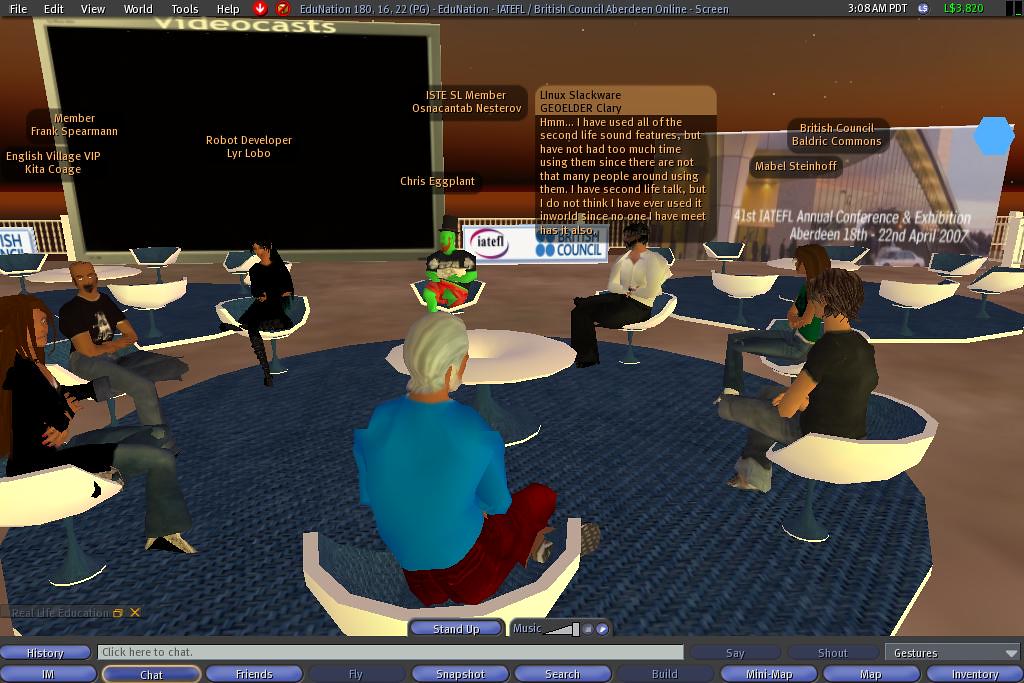The corporate sector is exploring a whole new world.
Which world? The virtual world.
What is a virtual world?
A virtual world is a computer-generated environment that more-or-less replicates the real world.
Arguably the best known virtual world today is Second Life. Anyone can download the Second Life Viewer from the Internet and set up a basic account for free.
Each account owner creates a character (or “avatar”) which appears in the virtual world in – typically – human form. When the user logs into Second Life, they can use their mouse and keyboard to manipulate their avatar to walk, run, jump, dance, fly and teleport to other locations. Avatars can also socialise with other avatars via text chat, and more recently, real voice.
Second Life also has its own economy. Its currency is the Linden Dollar (L$) which avatars can use to buy virtual goods and even virtual property. Linden Dollars are bought with real money and can be exchanged back again. As of 7 July 2008, L$265 = US$1.
So what?
At first, I found all this is kind of hilarious, but of course Second Life was originally pitched to the entertainment market. In other words, people entered Second Life for fun.
Notwithstanding its intent, smart cookies soon cottoned on to the fact that real money can be made in this virtual economy. People like you and me are creating all manner of virtual goods – clothes, tattoos, furniture, you name it – to trade in the virtual world. In 2006, Ailin Graef became a real-world millionaire by dealing in virtual property via her avatar, Anshe Chung.
And business isn’t restricted to entrepreneurial individuals. In fact, the companies dipping their toes into Second Life read like a Who’s Who of the business world: Adidas, Armani, Coca Cola, Dell, Kraft, L’Oreal, Peugeot… the list goes on.
Financial services in the virtual world
Wells Fargo was the first bank to enter Second Life, which they did to provide financial education to young students. ABN Amro soon followed, taking the extraordinary step of opening a virtual branch. Just last year, First Meta launched Second Life’s first credit card.
So who else has entered Second Life? The list includes BNP Paribas, BCV, Deutsche Bank, Saxo, Visa, and from Australia, Westpac.
But it’s not all beer and skittles. Recently, Ginko Financial declared insolvency with debts of L$200 million – equating to approximately US$750,000 of real investors’ money. Since then, complaints about virtual financial services providers prompted the operators of Second Life to institute a new policy:
As of January 22, 2008, it will be prohibited to offer interest or any direct return on an investment (whether in L$ or other currency) from any object, such as an ATM, located in Second Life, without proof of an applicable government registration statement or financial institution charter.

E-Learning opportunities in Second Life
So what does Second Life offer legally incorporated, government-regulated financial services organisations in terms of e-learning?
Consider the following possibilities for customers:
- A virtual island where visitors can come to learn about your products and services.
- Avatars controlled by staff members to converse with vistors and provide them with information.
- Avatars controlled by qualified financial planners to provide visitors with financial advice.
- Virtual educational seminars about financial literacy.
Consider the following possibilities for employees:
- Virtual training sessions.
- Virtual inductions for potential recruits.
- E-meetings, workshops and discussions.
Road blocks
While the potential of virtual worlds is tantalising, very real road blocks exist.
For example, the need to download a plugin and register individual accounts is never a good start.
Another problem is bandwidth. Second Life’s media is so rich, users chew through the data – making it technically challenging and potentially expensive.
There are plenty more criticisms of Second Life.
What’s the verdict?
While the real-world companies that have entered Second Life thus far have had mixed success, I’d suggest the virtual world remains under-explored by the corporate sector, particularly for e-learning.

Hi Ryan,
I agree that there´s huge potential in SL in terms of e-learning. I was a bit sceptical until i saw what TAFE was doing – i think they are really ahead of the game (especially ahead of corporates) in terms of use of SL for learning. I have a few links at home that i´ll send through with more info re TAFE and SL.
ING has also dipped their toes into the virtual world – we created an island called Our Virtual Holland – it was fully functional for about a year, sadly due to other business priorities ING pulled out of SL – our focus wasn´t e-learning though, we wanted to explore the business side of things, and aim to be one the main banks in SL. It was an interesting project – looking back the main things achieved were increased brand visibilty and a bit more of a risk taking attitude. We are still present in SL through the Cha Lounge..but i´m not up to speed with the ins and outs of this project. These were all initiated out of our head office in Amsterdam.
Cheers,
Deb
Another successful user of SL for e-learning (again in the education sector) is Skoolaborate. I’m looking very forward to the Director of Skoolaborate, Westley Field, presenting at our workplace later this month. I’ll definitately follow that up with another blog post.
BTW, just as I post something about SL, Google announces Lively. They must be reading my blog! ;-)
i´m keen to hear how the Skoolaborate presentation went ! I just came across this in my feeds http://vnutravel.typepad.com/trainingday/2008/07/second-life-cor.html
Have you had a chance to play with Lively yet?
Thanks for the link, Deb. I’ve just posted an overview of the Skoolaborate presentation. No, haven’t had a chance to play with Lively yet – have you?
Thanks for the post